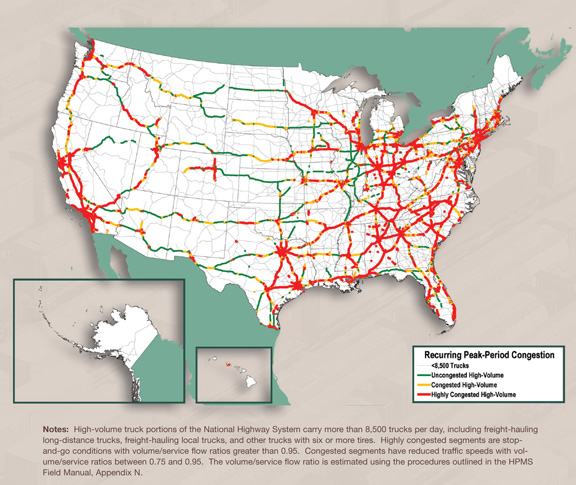Freight Facts and Figures 2010
Figure 3-12. Peak-Period Congestion on High-Volume Truck Portions of the National Highway System: 2040
Assuming no change in network capacity, the number of NHS miles with recurring congestion and a large number of trucks is forecast to increase nearly four-fold between 2007 and 2040. On highways carrying more than 8,500 trucks per day, recurring congestion will slow traffic on close to 7,200 miles and create stop-and-go conditions on an additional 23,500 miles.

Source:
U.S. Department of Transportation, Federal Highway Administration, Office of Highway Policy Information, Highway Performance Monitoring System; and Office of Freight Management and Operations, Freight Analysis Framework, version 3.1, 2010.
![]() You will need the Adobe Reader to view the PDFs on this page.
You will need the Adobe Reader to view the PDFs on this page.